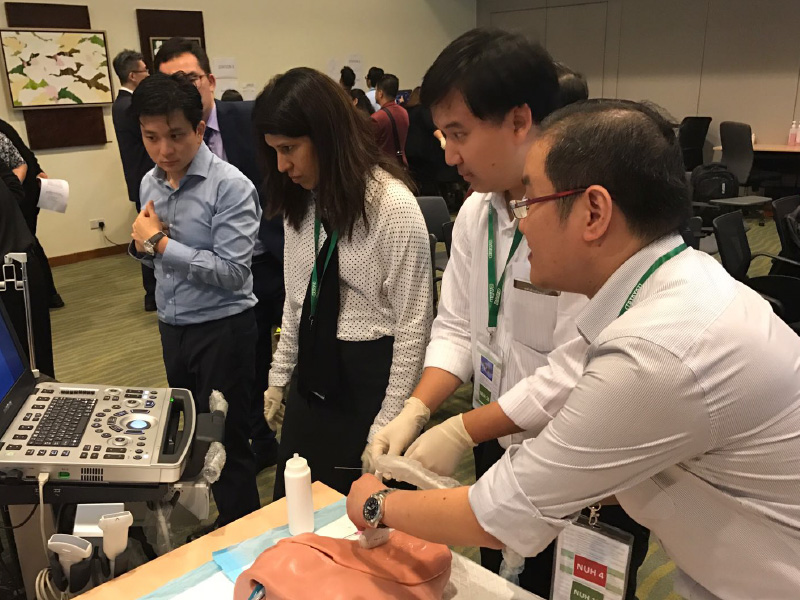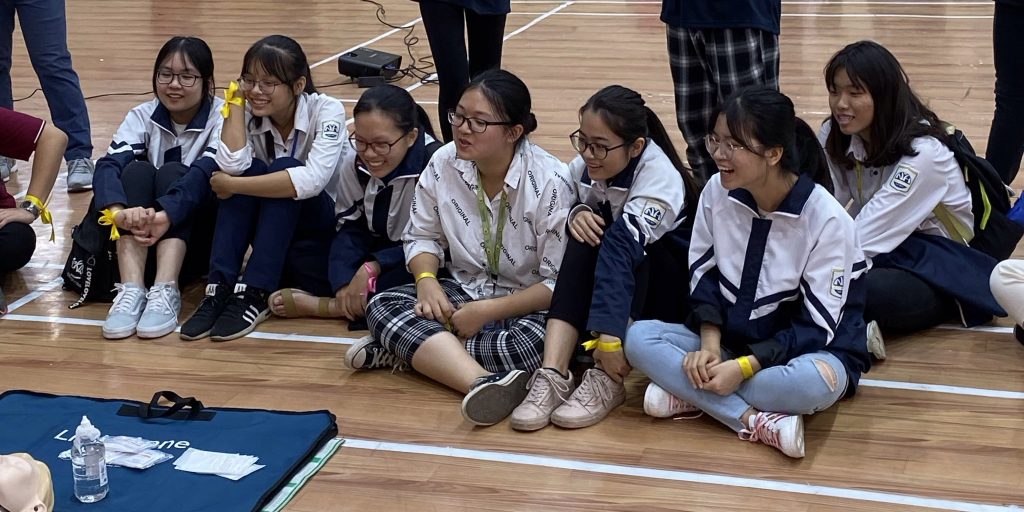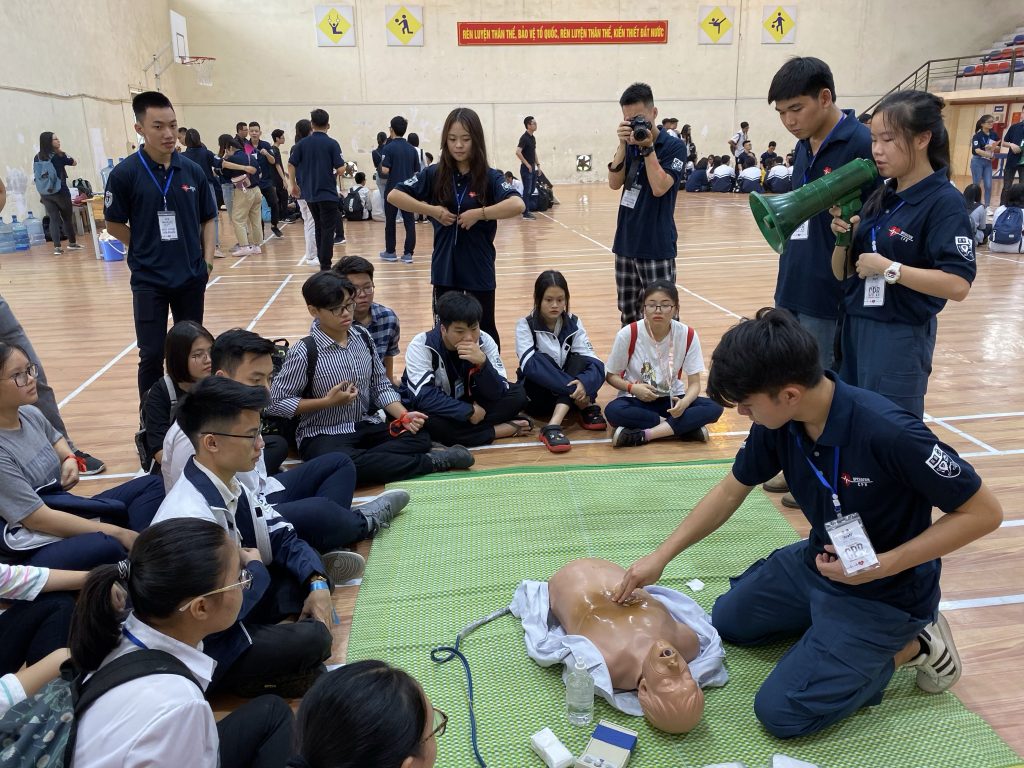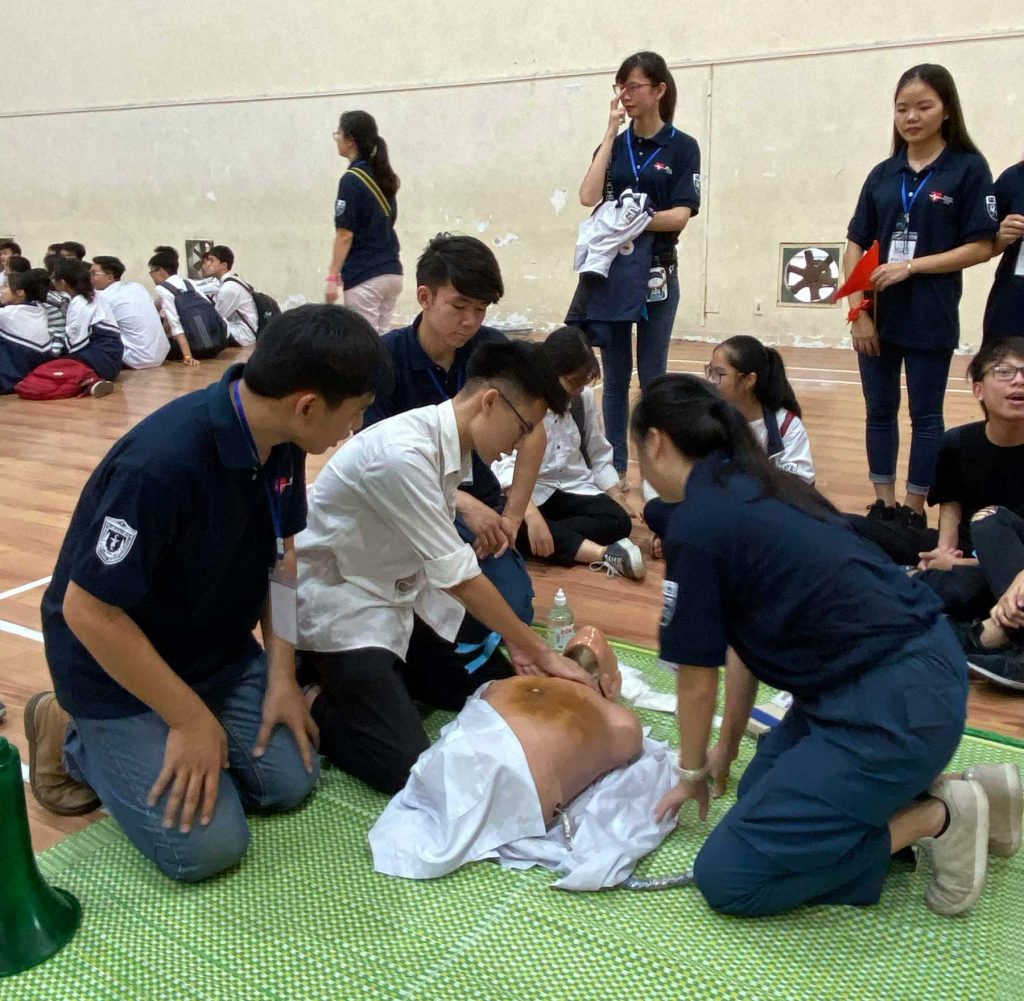Xin Chào! Operation CPR

The organising committee and facilitators of Operation CPR
by Lee Zhi Yan, Shariel Leong
Phase III Medical Students
Started in 2017, Operation CPR is one of the first overseas community-based basic cardiac life support initiatives that targets public health. Conducted in Vinh Tuong, Vinh Phuc, Hanoi, Vietnam, it was founded by A/Prof Koh Dow Rhoon from the Department of Physiology. Led by Dr Li Zi Sheng and Dr Jonathan Tang from the National University Hospital, this year’s exercise was organised by a team of students from the Yong Loo Lin School of Medicine and the Vietnam Military Medical University (VMMU).
Vietnam is facing an epidemiological shift in disease mortality from communicable to non-communicable diseases. Based on World Health Organisation’s (WHO) Non-communicable Diseases Country Profiles in 2018, cardiovascular diseases have the highest mortality rate amongst non-communicable diseases in Vietnam. Currently, there are operational policies to change dietary habits, tobacco use and treatment of high blood pressure in the country, but basic cardiac life support initiatives have been minimal. This is where Operation CPR comes in— to raise awareness, impart knowledge and encourage confident action in an emergency.
A team of 10 students from NUS Medicine travelled to Hanoi together with Dr Li and Dr Tang on 25 October 2019. We were warmly welcomed by the VMMU students, who treated us to a traditional music performance and an exciting programme that gave us insight into the Vietnamese culture and the university. In turn, we shared more about the academic programme and student life at NUS Medicine. It was interesting to note how each of our curriculum is tailored to the unique practice environment of our countries.

High school students having fun learning
Working with 45 students from VMMU, we conducted a half-day workshop for 120 high school students from Nguyen Hue High School for Gifted Students on 27 October. The workshop commenced with a keynote address by the Head of Nursing Department, VMMU, A/Prof Le Anh Tuan, who gave an overview of the increasing prevalence of NCDs in Vietnam and highlighted the importance of being prepared to respond to cardiovascular emergencies. Following this, Le Huyen Trang, a Year 6 VMMU medical student, gave the students a quick introduction about CPR, clearly explaining how to approach and help someone who had a cardiovascular emergency.
The high school students were all very attentive and eager to learn and were quizzed through a series of mini station games. Through the fun and laughter, important CPR knowledge was further reinforced to the students.
They were encouraged to apply their knowledge during a practical session, during which they cleared any doubts, to ensure that they knew exactly how to approach someone undergoing cardiac arrest. With the guidance of VMMU and NUS Medicine students, the high school students performed CPR on mannequins with feedback to ensure that their technique was accurate. It was heartening to see the high school students enthusiastically trying out their newly learnt skills and excitedly discussing their applications during the practical session. We have also received feedback that the workshop was very entertaining and useful.

The team of NUS medical students and NUH doctors
To consider the long-term prospects of the workshop, we conducted a survey on the knowledge, skills and attitudes of high school students and how they have changed after going through the CPR workshop. The results were promising: the students showed a marked improvement in their understanding and competence to perform CPR.
We hope that through this exercise, the Vietnamese students would be able to react in cardiac emergencies and apply new-found skills and knowledge to those in need. As global citizens in the larger scheme of things, we have a sense of duty to do our part and contribute to the regional community. We aim to expand this project in the near future and reach more students, while setting standards for resuscitation, first aid practice and training for healthcare providers and lay rescuers. In doing so, we hope to achieve our vision of having at least one first-aider in every household in Vinh Tuong.
We are very thankful to the professors and students from VMMU, who were very helpful and supportive throughout the project. We would especially like to give special thanks to A/Prof Le Anh Tuan; A/ Prof Le Van Dong, Head of Centre of Military Toxicology at VMMU and Dr Pham Thai Dung, Vice-Head of Intensive Care Unit of Hospital 103 for their unwavering support.
 NUS Medicine students Xie Jiaying (with loudspeaker) and Sean Wang (kneeling) explaining CPR procedures to a group of high school students in Hanoi, Vietnam
NUS Medicine students Xie Jiaying (with loudspeaker) and Sean Wang (kneeling) explaining CPR procedures to a group of high school students in Hanoi, Vietnam
 High school students practicing CPR on a mannequin, with guidance from VMMU and NUS medical students
High school students practicing CPR on a mannequin, with guidance from VMMU and NUS medical students
